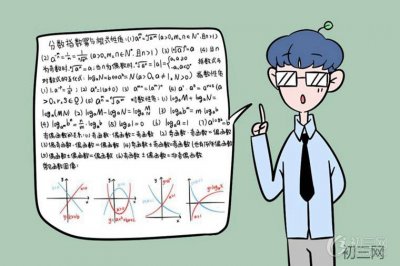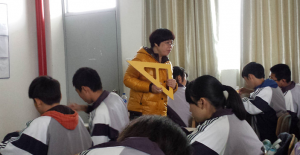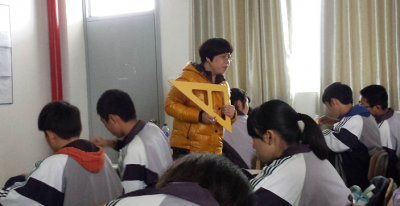孩子是否还在为分不清介词用法头疼?记得替他保存一份!
原标题:孩子是否还在为分不清介词用法头疼?记得替他保存一份!
中学英语有很多介词,而它们的用法又因为不同的情境而不同,今天我们就几组常考易混的介词进行一个详细的剖析,希望对广大学生有所帮助。

(1) in、on、at表示时间时:
in表示在一段时间里,常与月份,年份连用。
on表示在具体的某一天。
at表示在某个时刻或者瞬间,常与时刻或noon,night连用。
如:He was born on the evening of May 10th.
他出生于五月十日的晚上。
I usually get up at 6:00 in the morning.
我通常在早上的六点钟起床。
(2) after与in表示时间的用法区别:
after+具体时刻/从句表示“在…时刻之后”常用于一般时态。
in+(一段时间)表示“在(多久) 之后”,常用于将来时态。
如:He said that he would be here after 10:00.
他说他十点钟之后会来这儿
My father is coming back from England in about two months.
我父亲大约二个月以后从英国回来。
(3) by、in与with表示方式的用法区别:
by主要表示“乘坐”某个交通工具或“以……方式”,在被动句中表示动作的执行者。
in表示“使用”某种语言/文字。
with表示“使用”某个具体的工具、手段。
如:We see with our eyes and walk with our feet.
我们用眼睛看东西,用双脚走路。
Please write that article in Chinese.
请你用中文写那篇文章。
Let’s go to the zoo by car.
我们开车去动物园吧。
It was written by Lu Xun.
那是鲁迅写的。

(4) through与across、over的用法区别:
through指穿过…(门洞/人群/树林),一般指从立体空间中穿过。
across表示从表面,平面穿过。
over表示翻过…,越过。
如:Just then a cat ran across the road.
就在那时一只猫跑过路面。
They climbed over the mountain and arrived there ahead of time.
他们翻过大山提前到达了那里。
The visitors went through a big gate into another place.
参观者们穿过一个大门来到另一个景点。
(5)at the end of、by the end of、to the end、in the end的用法区别:
at the end of…既可以表示时间也可以表示地点,译为“在…末;在…尽头”,常与过去时连用。
by the end of…只能表示时间,译为“在…前;到…为止”,常用于过去完成时。
in the end与at last基本等义,表示“终于、最后”,通常用于过去时。
to the end译为“到…的终点为止”,前面往往有表示运动或连续性的动词。
如:By the end of last term we had learned 20 units of Book I.
到上学期期末我们已经学习了第一册20个单元。
At the end of the road you can find a small white house with blue windows.
在路的尽头你能找到一幢有蓝色窗户的小白房子。
In the end he failed in the final exams.
他期末考试最终没能及格。
We should go on with the work to the end.
我们应该把工作干到底。
(6)for a moment、for the moment、in a moment、at the moment的区别:
for a moment一会儿、片刻(=for a while),常与持续性动词连用。
for the moment暂时、目前,常用于现在时。
in a moment一会儿、立即、马上(=soon; in a few minutes),一般用于将来时。
at the moment此刻,眼下(=now),用于现在进行时。
如:Please wait for a moment.
请稍等。
Let’s leave things as they are for the moment.
暂时就维持现状吧!
I’ll come back in a moment.
我过会儿回来
I am very busy at the moment.
我现在很忙。

(7)in front of 与in the front of:
in front of“在…的前面”, 无范围。
in the front of“在…的前部”在一定范围内。
如:A car was parking in front of that car.
这辆车停在那辆车的前面。
In the front of the hall stood a big desk.
大厅前部立着一个大桌子。
(8)except与besides的区别:
except除了,表示排除掉某物,即不包含。
besides除了,表示包含,即“不仅……还有……”
如:Everyone went to the park except Tom.
除了汤姆,大家都去了公园(汤姆没有去)
Besides English she also studied many other subjects.
除了英语之外,她还学了其他许多功课。 (英语也是她学的功课之一)
(9)in,on ,to表示地点时的区别:
in表示”在……范围内”,还表示“在…之中”。
on表示“与……毗邻,接壤” 。
to表示方位,不接壤。
如:Beijing is in the east of China。
北京在中国的东部。(在内部)
Shandong is on the east of Hebei。
山东在河北的东面。(接壤)
Taiwan is in south of china.
台湾在中国的南面。(虽不接壤,但台湾是中国的一部分,属于内部)
Janpan is to the east of china.
日本在中国的东面。(不接壤)
(10)on,over,above与under, below, beneath
over 正上方
above斜上方
on接触表面上方
under正下方
below斜下方
beneath接触表面的下方
原创/安颖/北京市西城区英语教师,欢迎关注我的微信公众号,一起交流英语学习。





 初三新生如何制定学习
初三新生如何制定学习 英语学习技巧-归纳解
英语学习技巧-归纳解 汲取他人经验,与同学
汲取他人经验,与同学 初中英语核心单词解析
初中英语核心单词解析 初中英语八年级期末知
初中英语八年级期末知 初二如何逆袭成学霸
初二如何逆袭成学霸  这两个“是否”大不同
这两个“是否”大不同 初中英语学习方法-利
初中英语学习方法-利 逆袭学霸,要懂得约束
逆袭学霸,要懂得约束 初中英语过去时与完成
初中英语过去时与完成 初中英语学习方法揭秘
初中英语学习方法揭秘 初中英语学习注意事项
初中英语学习注意事项 初中尖子生的高效学习
初中尖子生的高效学习 寒假不停学,开学变学
寒假不停学,开学变学 英语学习秘籍-上课认
英语学习秘籍-上课认 初中英语学习方法谈-
初中英语学习方法谈-







